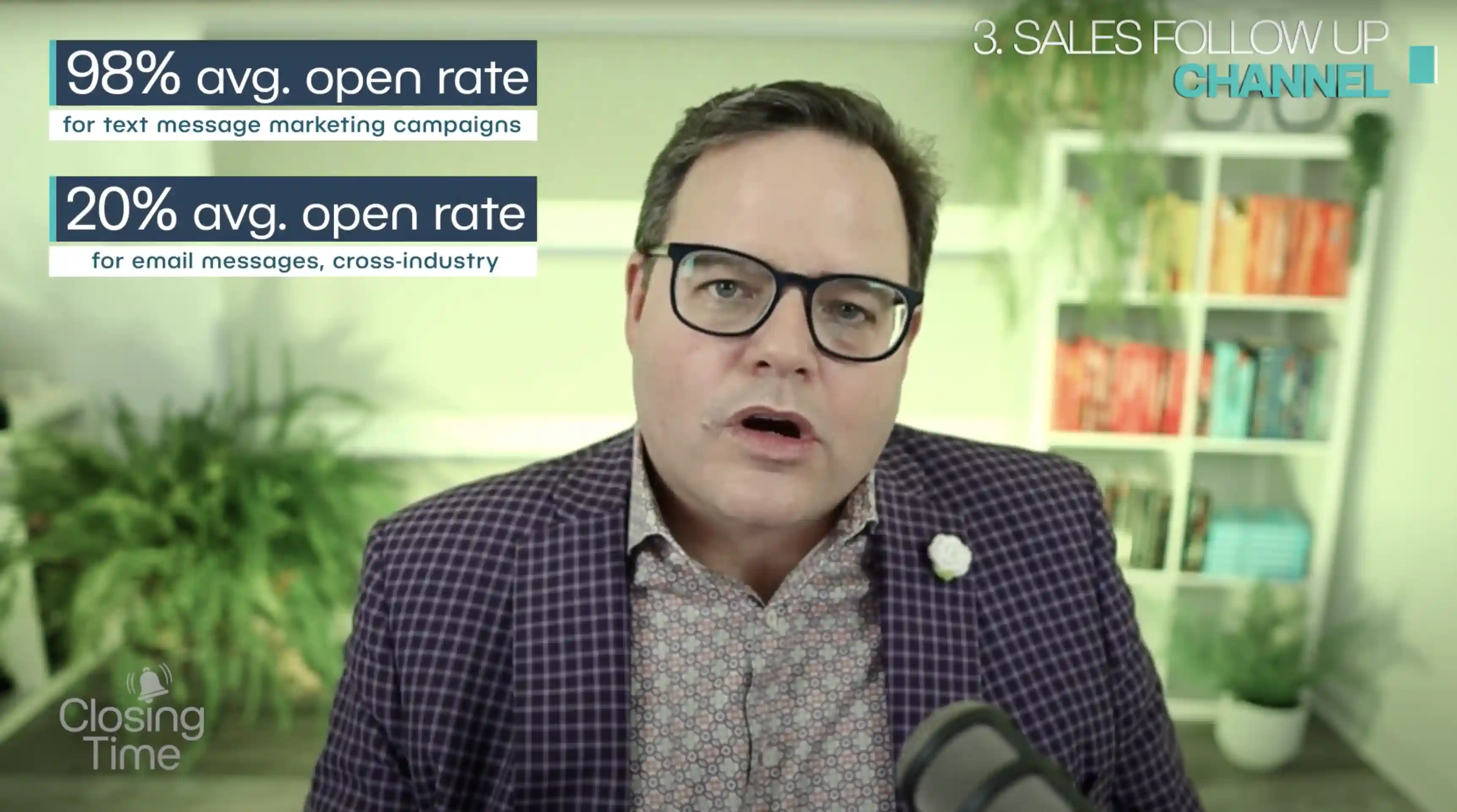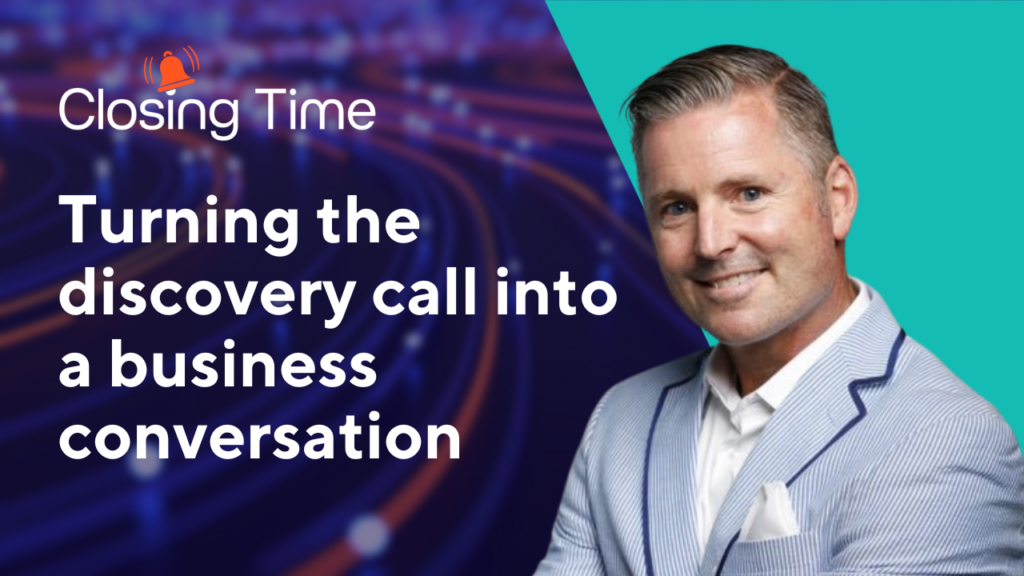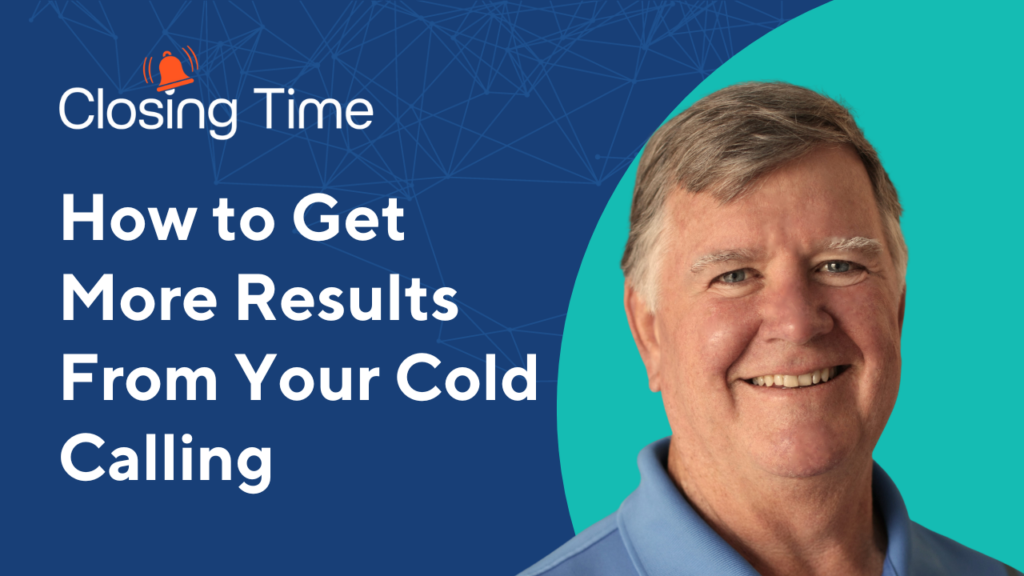Salespeople: are you in a rut with your lead follow up? You’ll get actionable steps to switch things up, in this week’s episode of Closing Time. Hi, everyone. I’m Dave Osborne, chief sales officer at Insightly. Welcome to Closing Time, the show for go-to-market leaders. I’m joined today by Jay Baer Jay’s a marketing advisor to some of the world’s most iconic brands, six time author and tequila expert extraordinaire. Hey, Jay. What is up, Super Dave?. Great to be back on Closing Time. All right, Jay. Well, thanks for joining us. So, Jay, it seems like salespeople love to use the same playbook every time with every deal, every buyer. Why do we keep falling into this trap? Um, I think partially it’s because sales people are really into process efficiency and sort of shaving time off each deal because it allows them to pursue more deals right. So if it’s like, hey, we’ve got this playbook that’s worked in the past, why don’t we use it every time? Because that will be faster. It’s almost like a chef using the same recipe for prime rib. It’s like, well, work last Thursday.. So this is the prime rib recipe. But sales isn’t cooking, right? It’s, you know, your diner is like, yeah, I love their prime rib Your customer isn’t like, I sure hope. I get the exact same sales process that I got from anybody else. And I will say and you know this as a sales leader, Dave, the embrace of sales oriented technology over the last few years has made it easier to kind of create these playbooks and then almost run them automagically And I totally get why that’s awesome from a time savings perspective. But it does create this situation where everything is kind of just going through the motions. And I don’t know that it always necessarily produces the best outcomes for the prospect. Would seem to me as well that the leads in the way that we’re top of funnel speaking to our customers is also shifted and expanded in a dramatic way that makes it so that we need to be more nimble and on our toes anyways as salespeople. Absolutely. I mean, the number of ways that a prospective customer can interact with a seller has grown exponentially. Look, you and I are old enough to remember when it was pretty much phone or face to face, like, those are your choices, right? And now you’ve got a whole bunch of other ways that you have to be at least pretty good at in order to connect with your different prospects. And the reality is different prospects prefer different contact mechanisms, Some people want that kind of email back and forth and some people want a series of video calls and other people want, I don’t know, send me a fax. That’s probably not true anymore. Probably not the fax. Maybe. Maybe. No, it’s important, right? Meet the customer where they’re at and where they want to be met. Right. I think maybe especially for the more millennial buyer, Gen X buyer, I’ve also seen the propensity or just the desire to be conducting business via SMS text messages, which maybe felt intrusive before but, you know, it seems like that’s a pretty common modality to be communicating with customers nowadays. Yeah, there’s really interesting research on that. It’s something like 50 or 60% of consumers say they’re more willing to interact with businesses via text than they were before the pandemic. It had a big shift on this. This pre-pandemic idea that like texting is for personal stuff, not for business stuff, but that’s really changed a lot. And that has been true in other parts of the world for a long time. But now it’s true in North. America as well. So there’s definitely an opportunity there. Obviously very different ways that we could communicate. But you’ve talked about the three. C’s of sales follow up communication. So I’d love to get your perspective on those. The first one, cadence. So yeah, talk us through that. Yeah. So I think the challenge here is that sometimes you’ve got a sales team that has this process, this this prime rib recipe, and this is the process they try to follow. Or maybe this individual salesperson who has developed a process or a recipe for themselves and it starts to work less. It just doesn’t have the same snap, it doesn’t produce the same results as it once did. And so you’re like, Well, what’s wrong? Is it what I’m saying?. Is that how I’m saying it? So there are three C’s, three things that you should think about fixing. And the first is cadence so either get in touch with your prospect faster and more often than you used to or the opposite, or let more time pass between interactions. Right? So cadence is how often you perform outreach.. That’s the first sort of knob to twist. The first, C, is to either go faster than you usually do or slower than you usually do. So when is the appropriate time to have to crank up that dial and have high velocity? And when is it a better idea maybe to drag your feet a little bit? I don’t know that there is a better or worse time. What I would recommend is if what you’re doing and what you have done isn’t working to the degree that you think it should, that’s the time to mix it up. This is a really similar to sort of a baseball analogy. So baseball pitchers will typically go fastball, fastball, and then something off speed, a changeup. Why? Well, because your body gets, as a hitter, your body gets sort of tuned in to this speed. I’ve this much time for the ball to get to the plate. And then if you throw a slower pitch, it throws off that timing. And while that seems like maybe it’s a negative consequence in a sales circumstance, throwing off the timing and the rhythm is actually a good thing because it makes the prospect say, oh yeah, wait,. I do need to reach back out today. We do need to set up a meeting. So I don’t think there’s a necessarily a perfect time in the relationship to go faster or slower. It’s just make a change when you’ve reached sort of a stalemate. I love that analogy to a sports pitcher makes a ton of sense. So the second C that you mentioned is content. So I love to get your perspective there. You know, a lot of times when salesperson’s or any sort of go to market expert is trying to reach out to a prospect somewhere in their customer journey. A lot of times that outreach is more, you know, hey, just checking in or hey, should we set up a call or hey, confirming the call for next week. It doesn’t have a lot of inherent value it’s just sand, right? It’s not rocks, it’s just sand. So if you’ve started to have some momentum slowing in your relationship with this prospect, one of the best things you can do is add value to every interaction. So even if the next sort of piece of your playbook is confirm the video call for next Thursday when you reach out with the message that says, hey, I’m confirming the video call for next week use that opportunity to say, and by the way, I also read this fascinating article in Forbes today that I think really describes some interesting things in your industry. Right? So add more content to each interaction if you feel like the process is stalling. That’s the second C. Absolutely. One of the things that you’ve talked about in the past, avoid the deadly sin of the check in like whenever you’re following up with the customer, just checkin in. Possibly one of the worst things you could say. Yeah, I guess it infers that the problem is that somehow they’ve forgotten you exist. And that’s typically not the issue. Right. Strive to add value at every touchpoint and at every interaction. Yeah. Love that. Yep. So the last C is channel. So what are you referring to when you talk about channel in this case? Yeah, really the contact mechanisms. We touched on this a bit ago, but the third C is channel. So if you have historically interacted with this prospect via email because you either that’s your standard process or you’ve got some evidence that that’s the channel that they prefer. And then it starts to slow down, your momentum starts to fade, mix it up, call them, send them a video email, send them a text message, send them a singing telegram with somebody in a gorilla suit. Like whatever it is that you usually use, don’t use that thing. And that sounds really obvious, but it is amazing how often I work with salespeople and sales teams, and their only recourse is, OK, we’ll send another email, but write it differently. I’m like, well, what if the problem is they just don’t want to use email, so don’t be afraid to change the channel. We said it earlier, but I’m saying if you’re not using SMS text as a channel, I think you’re missing out on a lot of wins, a lot of potential deals, you know, especially with you know, those more Gen X millennial buyers. Yeah. And I don’t know that I would use it as your first touch. No. Yeah. But certainly after you’ve built a little bit of relationship, I think not only is it personal and it breaks through the clutter. I mean, the data on this is remarkable. Some 95% of people open text messages and obviously it’s a lot lower percentage for email. Your mileage may vary, but typically it’s, you know, 20% or lower. So there’s a lot of evidence to suggest that the text message inbox is a far less competitive environment to be in. And as long as the prospect doesn’t feel like that’s a bridge too far in the relationship,. I couldn’t agree more, Dave. I think it’s an amazing place to sort of make that second, third, fourth, fifth, infinity outreach. Absolutely. Well, the three Cs, Cadence, Content, Channel. Jay, any closing thoughts? I think part of it is you got to make sure that sales leadership is on board with this. Sometimes everybody wants all of their team to follow the exact same playbook because we’ve worked so hard putting this playbook together. And the software says that this is the playbook. And I get all that. Like, I’m not suggesting that those tools aren’t important, they are. but if you’re doing the same thing every time and it’s not working as well, you got to have the courage and the permission to try something different. The definition of insanity, right? Is doing the same thing over and over and expecting different results. This works the same way. Don’t be afraid to change the channel, to change the content, and to change the cadence. I love it. All right. Well, thanks very, very rich content. Really, really appreciate the time. That’s all the time we have for today’s episode of Closing Time. Jay, thanks again for joining us. I loved it. Thank you. And thanks to all of you out there watching. Remember to subscribe to the channel, like the video, and take the belt for notifications so you don’t miss another episode. We’ll see you next time.





